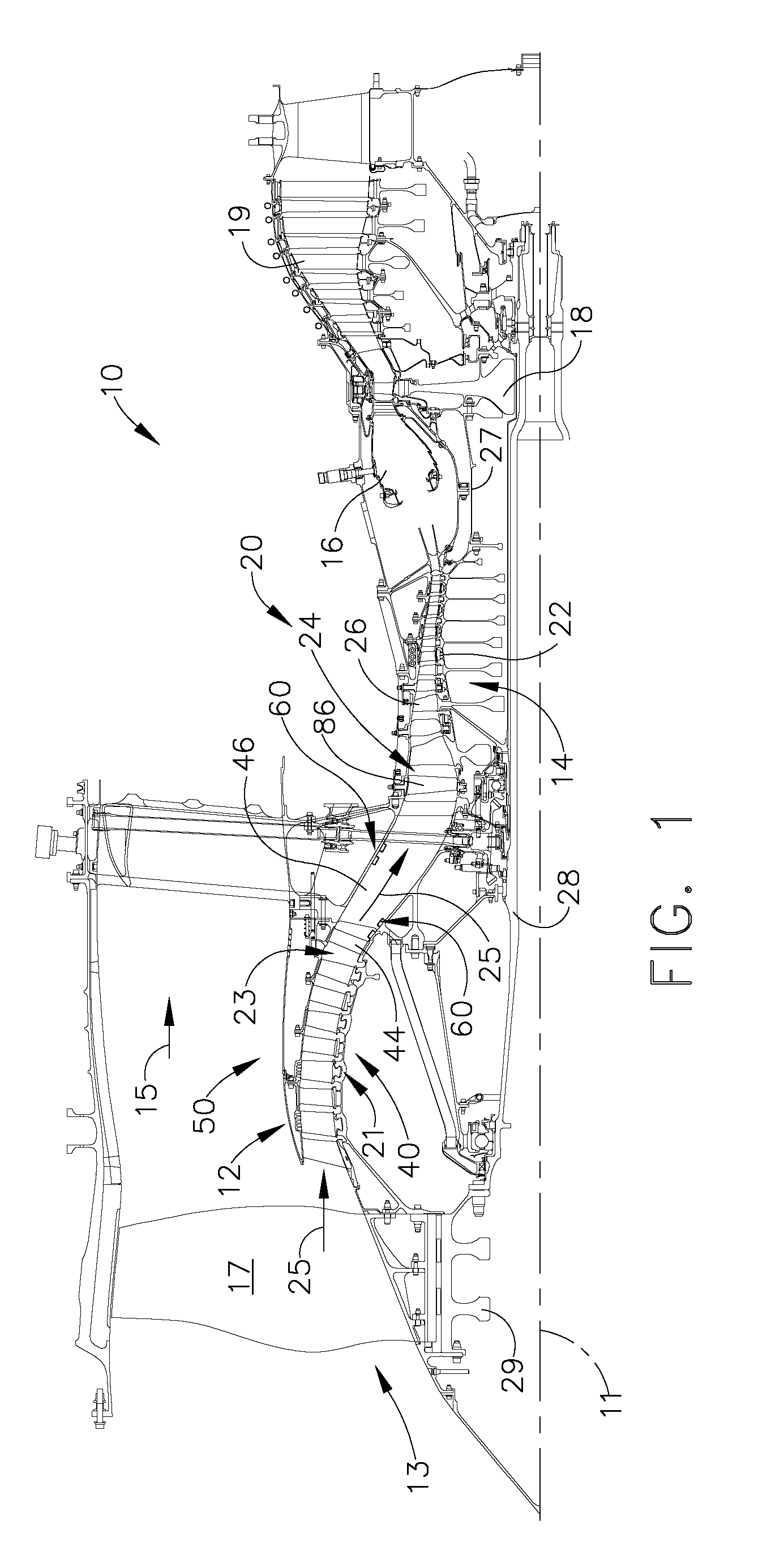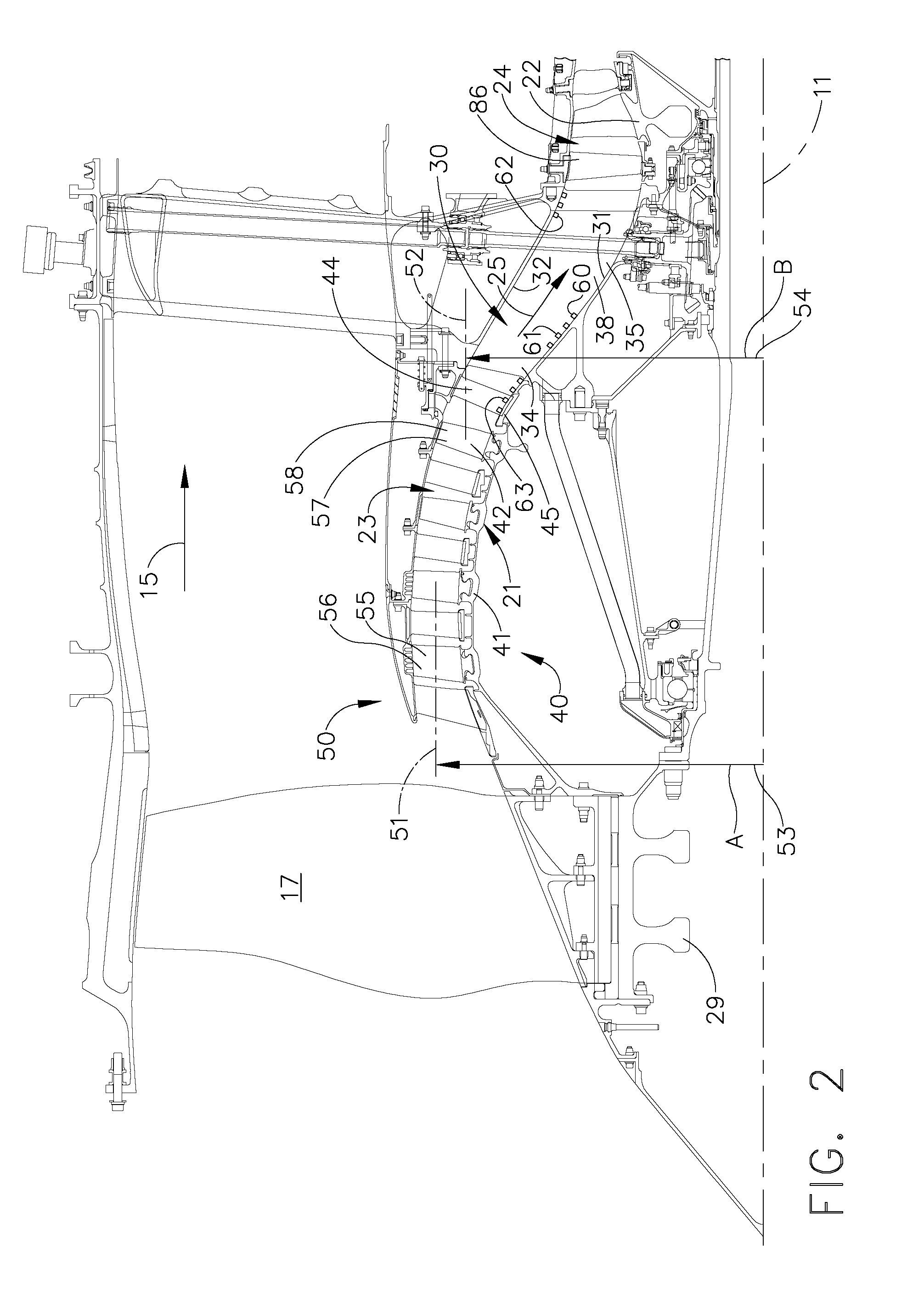Plasma enhanced booster and method of operation
a booster and plasma technology, applied in the field of boosters, can solve the problems of reducing the backbone stiffness of the engine, high efficiency loss, and difficulty in maintaining the desired clearance over the rotor tips,
- Summary
- Abstract
- Description
- Claims
- Application Information
AI Technical Summary
Benefits of technology
Problems solved by technology
Method used
Image
Examples
Embodiment Construction
[0019]Referring to the drawings wherein identical reference numerals denote the same elements throughout the various views, FIG. 1 shows a cross-sectional view of an exemplary gas turbine engine assembly 10 having a longitudinal axis 11 and a compression system 20 comprising a first compressor 21 and a second compressor 22 that is located axially aft from the first compressor 21. In the exemplary embodiment shown in FIG. 1, the first compressor 21 is a booster 40, that is also referred to alternatively herein as a low-pressure compressor. The exemplary booster 40 shown in FIGS. 1 and 2 has four rotor stages, with each rotor stage having between 50 and 90 booster rotor blades. The exemplary booster system 50 has a row of stator vanes (alternatively referred to herein as booster inlet guide vanes “IGV”) located axially forward from the first booster rotor stage. The exemplary booster system 50 has a row of stator vanes (alternatively referred to herein as booster outlet guide vanes 44...
PUM
 Login to View More
Login to View More Abstract
Description
Claims
Application Information
 Login to View More
Login to View More - R&D
- Intellectual Property
- Life Sciences
- Materials
- Tech Scout
- Unparalleled Data Quality
- Higher Quality Content
- 60% Fewer Hallucinations
Browse by: Latest US Patents, China's latest patents, Technical Efficacy Thesaurus, Application Domain, Technology Topic, Popular Technical Reports.
© 2025 PatSnap. All rights reserved.Legal|Privacy policy|Modern Slavery Act Transparency Statement|Sitemap|About US| Contact US: help@patsnap.com



